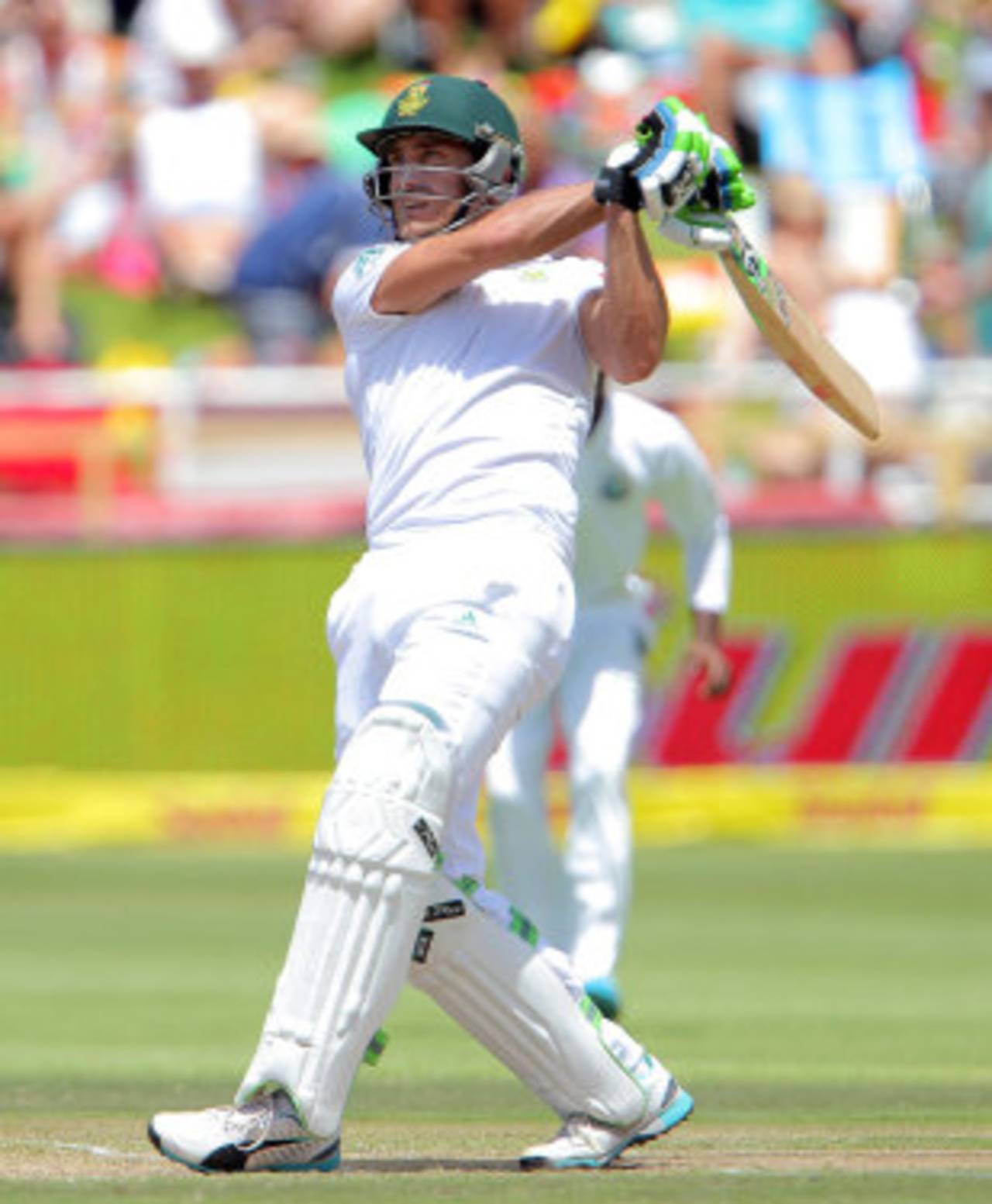Look at
Faf du Plessis and you may not see a man cut out for roughing it. The slick side-path, groomed 'tache and clear complexion suggests quite the opposite. But look at Faf du Plessis while he is batting and his ruggedness is revealed.
There's the intentional forward defensive, complete with exaggerated stride and firm nod of the head as bat meets ball. There's the intrepid back and across, which often serves only to gives him a closer look as the delivery passes safely outside off. There's the introspective walking towards square leg, sometimes after delivery, sometimes less often to let the mind wander away from the importance of the task at hand.
Even when he is not trying to save a game, those three things are the foundation of every du Plessis innings. It's how he gets himself in the right of frame of mind to understand the small margins. Jerome Taylor only had to drop it a touch short and du Plessis had the time to rock back and pull, Sulieman Benn only had to venture a little too close to the leg-stump line for du Plessis to flick it down fine.
Being able to see when the smallest opportunity to score runs presents itself and being able to actually score those runs is what makes du Plessis a good No. 3. Being able to sit tight and wait for those the rest of the time is what will make du Plessis a great No. 3, the kind South Africa got used to thanks to Hashim Amla and Jacques Kallis.
That position is crucial to sustaining the success of South Africa's strong top seven, which hinges on No. 3, 4 and 5 more than it sometimes seems to. The No. 6 and 7 positions have been used to blood new batsman and the opening partnership has not performed as consistently or confidently as it should have in the recent past.
South Africa's top two for the last two years has most often been Alviro Petersen and Graeme Smith. They batted together 18 times
and averaged 37.70. Since Smith's retirement, Petersen and Dean Elgar have had nine innings and upped that average to 39.77.
Thought about simply, that means South Africa usually find themselves around 40 for 1, which does not paint the picture of stability they seem to stand for. It also goes some way to explain why a conservative approach like du Plessis works so well. It allows him to perform some of the rebuilding he relishes without requiring the full-scale refurbishment that would leave him struggling with the tail. Instead, du Plessis usually finds himself batting with the best of the South African line-up, Hashim Amla or AB de Villiers, who both seem on an upward curve that has no ceiling.
Since January 2013, Amla has played
17 matches, scored 1382 runs, including five centuries and and averaged 61.90, higher than his overall numbers of 52.63. All that is in addition to taking over the captaincy. In the same time, de Villiers has played
18 matches, scored 1596 runs with six hundreds at 63.80, also higher than his overall 51.65. For some periods of that, he was also the first-choice gloveman. The pair embrace extra responsibility as though it was a cuddly teddy-bear and that may be why they have responded to the need to make up for a changing lower-middle order and a top two who often have to contend with challenging conditions, especially at home.
They have laid the blueprint for South Africa's line-up, as du Plessis explained. "We always strive to get hundreds and we do it quite consistently. AB and Hashim have been in the top two batsmen in the world so they do it most consistently. We hope one or both of them can go on to get hundreds tomorrow," du Plessis said. "I was disappointed not to go through and score 100. I felt very good, I moved well and hit the ball nice and late. I did the hard yards. My role at No. 3 is to be as solid as possible for the team. I should have got 100 or been 80 or 90 overnight but a lapse in concentration showed you can get out every time.
On 68, du Plessis advanced out of his crease to hack at a ball that was well outside off and was stumped. That left him with just one of his five Test hundreds
at No. 3, but his average in that position is noticeably higher there. In six innings at No. 3, du Plessis boasts 427 runs at 61.00, in 14 innings elsewhere, his numbers are still impressive, particularly at No. 6 where he started his career, but it's clear where he prefers to bat. More importantly, it's clear how he wants to bat: the way a No. 3 should.
